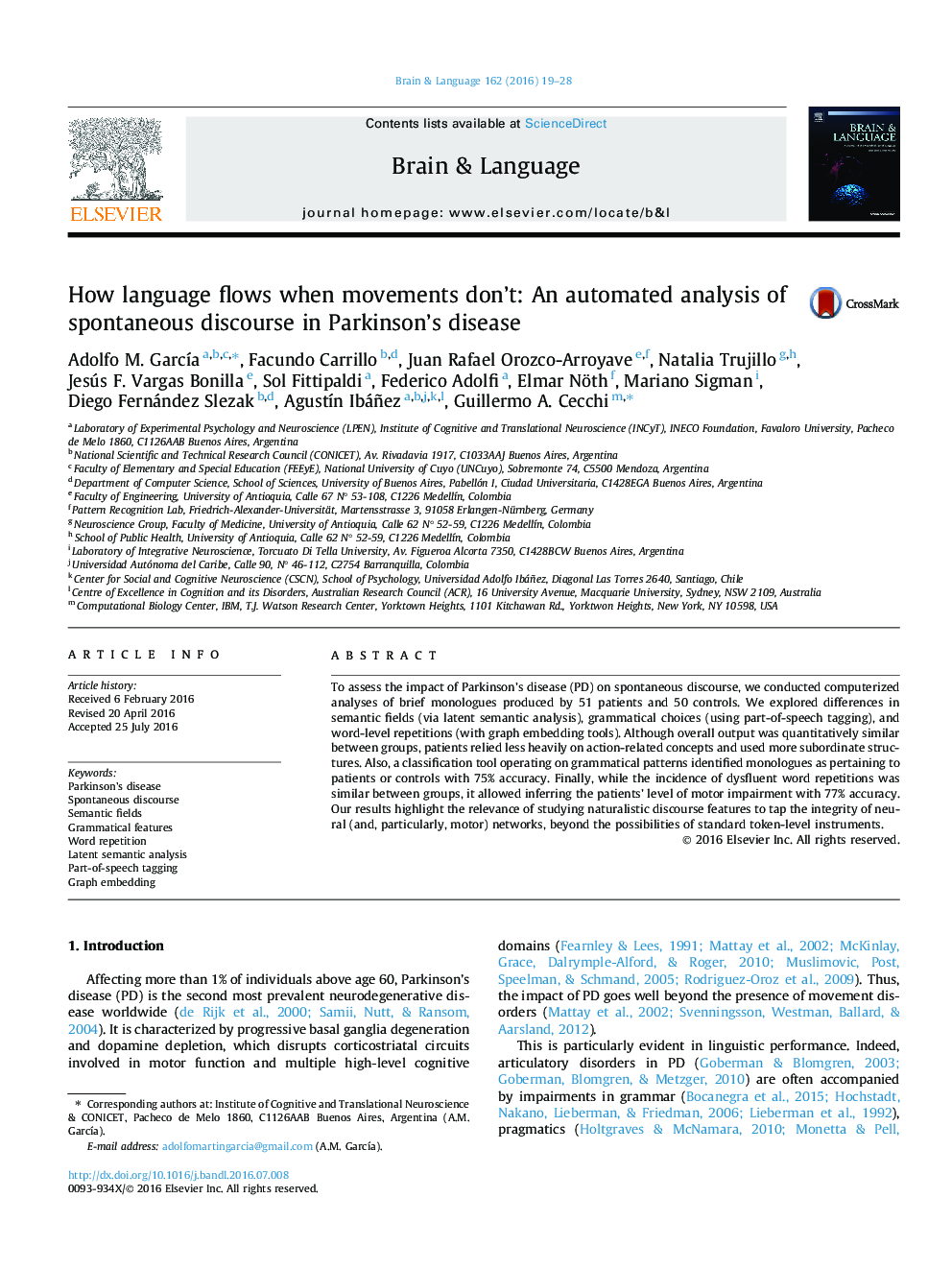| Article ID | Journal | Published Year | Pages | File Type |
|---|---|---|---|---|
| 7283739 | Brain and Language | 2016 | 10 Pages |
Abstract
To assess the impact of Parkinson's disease (PD) on spontaneous discourse, we conducted computerized analyses of brief monologues produced by 51 patients and 50 controls. We explored differences in semantic fields (via latent semantic analysis), grammatical choices (using part-of-speech tagging), and word-level repetitions (with graph embedding tools). Although overall output was quantitatively similar between groups, patients relied less heavily on action-related concepts and used more subordinate structures. Also, a classification tool operating on grammatical patterns identified monologues as pertaining to patients or controls with 75% accuracy. Finally, while the incidence of dysfluent word repetitions was similar between groups, it allowed inferring the patients' level of motor impairment with 77% accuracy. Our results highlight the relevance of studying naturalistic discourse features to tap the integrity of neural (and, particularly, motor) networks, beyond the possibilities of standard token-level instruments.
Keywords
Related Topics
Life Sciences
Neuroscience
Biological Psychiatry
Authors
Adolfo M. GarcÃa, Facundo Carrillo, Juan Rafael Orozco-Arroyave, Natalia Trujillo, Jesús F. Vargas Bonilla, Sol Fittipaldi, Federico Adolfi, Elmar Nöth, Mariano Sigman, Diego Fernández Slezak, AgustÃn Ibáñez, Guillermo A. Cecchi,
